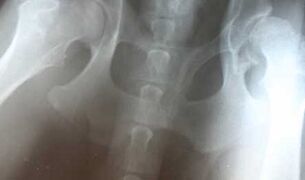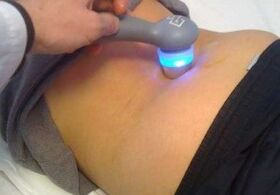
Hip joint arthropathy is a pathology that leads among various degenerative-dystrophic problems of the musculoskeletal system. There are many reasons that cause this disease, therefore, different age groups of people are at risk. It should be noted, however, that hip joint failure is more common in the middle-aged and elderly.
Grade 1 hip joint disease is successfully treated with medication without surgery. However, unfortunately, patients are not in a hurry to consult a doctor immediately, mistakenly believing that the painful sensations will disappear on their own. Meanwhile, the pathological process has already begun and is progressing more and more every day. Distinguish between primary joint of hip joints, which has an unclear etiology and secondary resulting from such diseases:
- Perthes disease?
- congenital dislocation?
- abnormal tissue growth in the hip joint.
- aseptic necrosis of the thigh
- inflammatory processes?
- hip fractures.
One or two hip joints may be affected. Bilateral arthropathy is not uncommon and a unilateral pathological process may involve the joint of the spine and knee
Causes of hip joints
- deterioration of arterial blood flow and venous outflow, as a result of which the tissues are not properly nourished, there is an accumulation of under-oxidized metabolic products that are responsible for the activation of enzymes.
- mechanical factors that cause joint overload, for example, overweight or professional sports.
- biochemical changes in cartilage, hormonal disorders, metabolic disorders.
- traumatic flares, fractures of the cervix and pelvis.
- necrosis of the tissues of the head of the hip bones.
- inflammation of the joints, infectious processes?
- pathological changes in the spine (kyphosis, scoliosis) and flat feet
- congenital dislocation of the thigh.
- congenital pathologies of joint development?
- sedentary lifestyle
- hereditary predisposition of the body (skeletal weakness, metabolic disorders, structural characteristics of cartilage tissues).
Symptoms of hip joints
The general symptoms of this pathological process are discernible, however, it should be understood that they may differ at different stages of joint development. The main points of the hip joints are:
- pain in the groin, hip, joints and knee, which does not subside even at rest.
- stiffness and stiffness?
- passes?
- femoral atrophy?
- the affected limb becomes noticeably smaller.
The main symptom of hip joint pain is the pain, intensity and duration, as well as the nature and location of which depends entirely on the characteristics of the pathological process. It is best to start treatment early in the illness, when the discomfort is not yet very severe. If proper measures are not taken in time, the pain will begin to intensify, resulting in significantly limited mobility of the affected limb.
Grade 2 hip arthropathy is characterized by severe pain radiating to the groin and thigh. In this case, the function of the joint is interrupted, lameness occurs, internal movement is limited and the hip abduction to the side. The abductors and extensor muscles lose their strength, the bone growths become visible on X-ray, which can be sharply protruding. The head of the femur is deformed, its contour is deformed and the tumor increases. In addition, cysts can form in the most stressed areas of the joint.
In stage 3 joint development, the pain becomes permanent and may even bother you at night. It becomes so difficult to walk that you have to use a special stick. In the hip joint, movements are limited, the muscles of the buttocks, the affected thigh and the atrophy of the lower limb and the leg are reduced. All this leads to a change of gait and an increase in the load on the affected joint. As a result of the bone growth, the joint space disappears and the joint grows together, eventually losing its mobility.
Treatment of the hip joint

If the disease is detected at an early stage, the conservative method of treatment is preferred, using various drugs. The patient is mainly prescribed non-steroidal anti-inflammatory drugs, which perfectly relieve swelling and inflammation, due to which the pain syndrome is reduced. With muscle spasms, muscle relaxants are prescribed, the action of which aims to stimulate blood circulation and relieve spasms. In addition, for arthropathy, chondroprotective agents are often used - drugs that allow the restoration of diluted cartilage tissue.
Do not forget the methods of therapeutic massage and physiotherapy, as the effectiveness of these procedures is very high. Very often, they try to treat the affected joints with various compresses, lotions and ointments prepared according to folk recipes, but all these treatments can not offer the desired therapeutic effect. With their help, you can only temporarily relieve pain and muscle spasms. Before treating hip arthropathy, it is imperative to consult a doctor, as the independent use of one or another drug can aggravate an already complex condition.
Gymnastics for hip joints
Exercise plays an important role in the treatment of the disease. Specially selected exercises for hip joints prevent her from growing together and maintaining mobility. When developing a wound in the joints in this way, you must be very careful not to cause further injury to yourself. Before and immediately after exercise therapy, it is recommended to massage muscles in the area of the thigh and the affected joint, in order to avoid the appearance of discomfort.
Water is an excellent helper in the treatment of arthritis, so it is useful for the patient to swim in a pool, river or sea. In addition, a warm bath can relieve pain and relieve muscle tension, in which you can make smooth and slow movements of your legs. It is important not to overload the sore throat and be as calm as possible.

















































